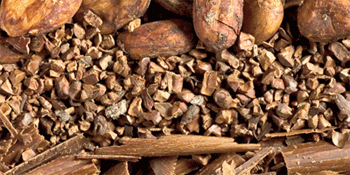Need help choosing the right product?
Our tool will match the best product to your needs
Launch product selectorWelcome to the Indian Website
We have detected that you may prefer the Global site. Please use the language dropdown above to change your selection if required.
Typical chocolate conching machines consist of a large jacketed vessel containing a mechanism to ‘tumble’ the ingredients required to make chocolate. This tumbling process can generate considerable heat. If the ingredients are not cooled the reduced friction will cause incomplete mixing. Once mixing is complete it may also be necessary to heat the conch and then cool it again. Because there is a large amount of chocolate in relation to the surface area of the conch, it takes a long time for the chocolate to heat up or cool down.
As a consequence of the long delay in heating and cooling normal single loop temperature controllers will not work satisfactory on this type of system. To solve this problem Eurotherm’s 2604 controller using a cascade control set up is be used. Heating and cooling is controlled by pulsing solenoids. These allow hot and cold water to flow into the conch’s jacket.
Using the cascade PV feedforward option that is available in the 2604 controller it is possible to limit the temperature difference between the water jacket and the chocolate. This is particularly desirable when cooling to ensure that the chocolate close to the wall of the jacket does not solidify while the bulk of the chocolate is still warm.

The manufacture of chocolate is done through several processing stages which require maintenance of the liquid state up to the final stage – tempering (turning into solid state).
Conching and tempering are two important phases since the quality of the final product depends on mastering these two processes.

A fundamental stage in the creation of chocolate, conching enables homogenisation of the product emerging from the grinder. These machines consist of a vessel with a double wall which enables circulation of the warm and cool water, and a series of mechanisms which create continuous grinding and mixing movements. This operation mainly prevents moisture loss, but
also changes the taste, fineness and homogenisation of the chocolate.
Tempering is a delicate stage which involves carefully turning the chocolate from liquid or semiliquid state to solid state.The chocolate is heated to a specific temperature until the cocoa butter crystals have completely fused. Next, it is carefully cooled down to a specific temperature.
It is easy to spot good tempering because it produces a glossy and smooth appearance; good, clear snap; firm bite; smooth, silky, homogenous texture in the mouth; which develop all the aromas and taste.
Product Selector
Our tool will match the best product to your needs
Launch product selectorContact Us